Top Ten US miners
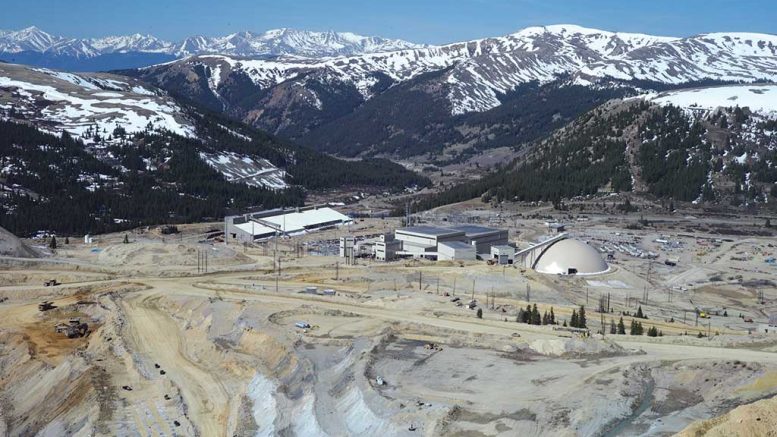
Freeport McMoRan (NYSE: FCX) moves to the top spot this year, after placing third in 2020. The Phoenix-headquartered company is one of the world’s largest publicly traded copper producers and operates a portfolio of mines in the Americas and Indonesia.
About 42% of the company’s copper reserves are in the U.S., 29% in South America, and 29% in Indonesia.
In the U.S., Freeport owns seven open-pit copper mines and two molybdenum mines. It is also developing the Lone Star copper mine in Arizona. Initial development was completed in the second half of 2020 and once in production, Freeport expects Lone Star will produce about 200 million lb. of copper a year.
The company’s South American assets include two copper mines in Peru and Chile – Cerro Verde (54%) and El Abra (51%). In addition to copper, Cerro Verde produces molybdenum concentrate and silver. At Albra, the company is undertaking an expansion study to assess processing sulphide material.
The company’s Indonesian subsidiary, PT Freeport Indonesia, has a 48.76% stake in the Grasberg underground mine (an Indonesian state-owned enterprise holds the remaining 51.24%). Freeport is accelerating the ramp-up of production at the operation, with the aim of reaching 75% of nameplate capacity this year. The company forecasts that average annual production from the mine will be 1.55 billion lb. of copper and 1.6 million oz. of gold between 2021 and 2025.
Last year, Freeport produced a total of 3.2 billion lb. of copper, 857,000 oz. of gold, and 76 million lb. of molybdenum. About 44% of its copper came from the U.S., 31% was from South America, and 25% from Indonesia.
Newmont
Market capitalization: $51.2 billion

Denver-headquartered Newmont (TSX: NGT; NYSE: NEM), which ranked first last year, is in second place this year. The company is one of the world’s largest gold producers, with operations in the Americas, Africa, and Australia.
Newmont has attributable proven and probable reserves of 2.9 billion tonnes grading 1.03 grams gold per tonne for 94.24 million contained gold ounces. Over 90% of these reserves are in top-tier jurisdictions, based on credit agency ratings.
The company has nine world-class assets, which it defines as gold operations producing at least 500,000 oz. gold-equivalent annually on a consolidated basis, with all-in sustaining costs of under US$900 per oz., a mine life of greater than ten years, and an average grade of 1.03 grams gold per tonne.
Newmont’s operations include the Boddington mine in Western Australia, which is expected to produce over one million oz. of gold-equivalent annually from 2021-2025, and the Penasquito open-pit mine in Mexico, forecast to churn out over 1.7 million oz. of gold-equivalent per year over the next four years. The Nevada Gold Mines joint venture, in which Newmont has a 38.5% stake and Barrick Gold (TSX: ABX; NYSE: GOLD) 61.5%, is expected to produce 1.37 million attributable gold oz. this year.
The company has set its 2021 production guidance at 6.5 million oz. of gold, between 6.2 and 6.7 million oz. in 2023, and 6.5-7.0 million oz. through 2025.
In May, Newmont acquired the remaining shares of GT Gold it did not already own. The acquisition included the Tatogga gold project in the Golden Triangle of B.C., which it is says has the potential to be a significant gold and copper producer.
Founded in the U.S. in 1921, the company established a Canadian presence in 2019, with its $10 billion acquisition of Goldcorp, which closed in April of that year.
Southern Copper
Market capitalization: $48.3 billion
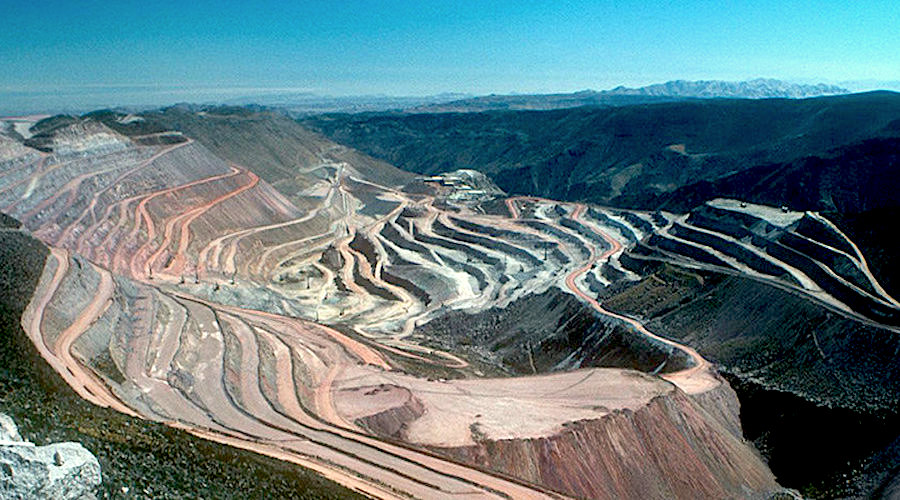
Arizona-based Southern Copper (NYSE: SCCO; LSE: SCCO) is one of the world’s top five copper producers. Grupo Mexico, one of the world’s largest copper producers, is Southern Copper’s largest shareholder with an 88.91% stake.
Southern Copper produces copper, molybdenum, silver, and zinc and has mining, smelting, and refining facilities in Peru and Mexico. The company has six assets in Peru: the Toquepala and Cuajone open-pit mines, the Ilo smelter, and four exploration stage projects. These operations produce copper as well as by-products such as molybdenum and silver.
In Mexico, it owns ten assets, including the La Caridad and Buenavista open-pit mines, which produce silver, copper, and molybdenum. The company also has five underground operations that produce zinc, copper, lead, and precious metals. It also owns a coal mine and a zinc refinery.
The company’s copper concentrates are smelted to produce either blister copper or copper anodes. Both products are sent to refineries, where the anodes are converted into copper cathodes and, later, copper rods.
Southern Copper’s exploration efforts are focused on Argentina, Chile, Ecuador, Mexico and Peru.
Last year, the company generated record production of one million tonnes copper, 27,441 tonnes of molybdenum, and 21.5 million oz. of silver.
Albemarle
Market capitalization: $19.7 billion
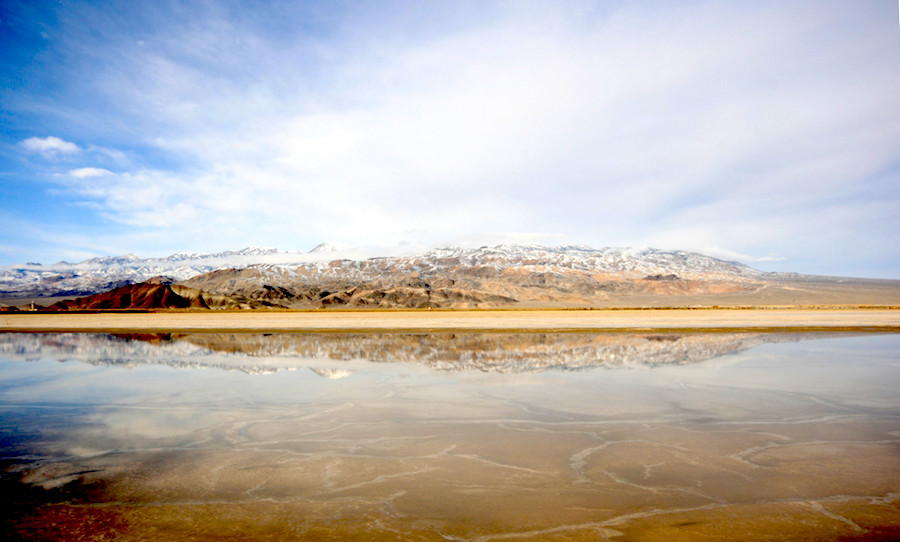
Louisiana-based Albemarle (NYSE: ALB) is a leading supplier of specialty chemicals and has lithium, bromine, and catalyst business segments.
Albemarle’s lithium comes from solar evaporation ponds in Chile’s Salar de Atacama and in Silver Peak, Nevada. The lithium brines from Chile are processed into lithium carbonate and lithium chloride at the La Negra chemical plant in Antofagasta, Chile. The Nevada brines are processed into lithium carbonate at Silver Peak. The two plants produce a combined total of over 60 million tonnes of lithium-carbonate equivalent a year.
This year, the company plans to complete a third phase expansion of La Negra that will see production capacity of battery-grade lithium carbonate increase to 80,000 tonnes per year from its current capacity of 39,916 tonnes per year.
Albemarle also generates mined lithium through its 49% interest in Australia-based Talison Lithium (ASX: TLH). China’s Tianqi Lithium owns the remaining 51%.
Its bromine segment generates products for fire safety and other specialty applications. Albemarle’s catalysts division produces catalysts, additives, and performance catalyst solutions.
Albemarle estimates that 48% of its revenues are from Asia (including 14% from China); 26% from its North American operations; 24% from Europe, the Middle East, and Africa; and 2% from the rest of the world.
Mosaic
Market capitalization: $11.5 billion

Mosaic (NYSE: MOS) is one of the world’s largest producers of concentrated phosphate and potash crop nutrients, with operations in nine countries. The company operates seven potash and phosphate mines and facilities in Florida, Saskatchewan, and Peru, along with five phosphate concentrate sites in Louisiana and Florida.
In January 2018, Mosaic completed its acquisition of Vale Fertilizantes, which added five phosphate mines, four phosphate chemical plants, and a potash mine in Brazil to the company’s portfolio.
Earlier this year, Mosaic and Sound Agriculture, a California-based life science company that is looking to sustainably increase farming productivity, formed a strategic partnership to bring a new nutrient efficiency product to market to boost crop yields and improve soil health. The product is expected to launch in the U.S. by 2023 before rolling out to markets throughout the Americas, focusing on Brazil, Argentina, and Canada.
Last year, the company produced 9.4 million tonnes of potash, 8.5 million tonnes of phosphates, and 10.6 million tonnes of fertilisers. This year it expects to produce between 13.3 and 13.8 million tonnes of potash.
Cleveland-Cliffs
Market capitalization: $10.5 billion
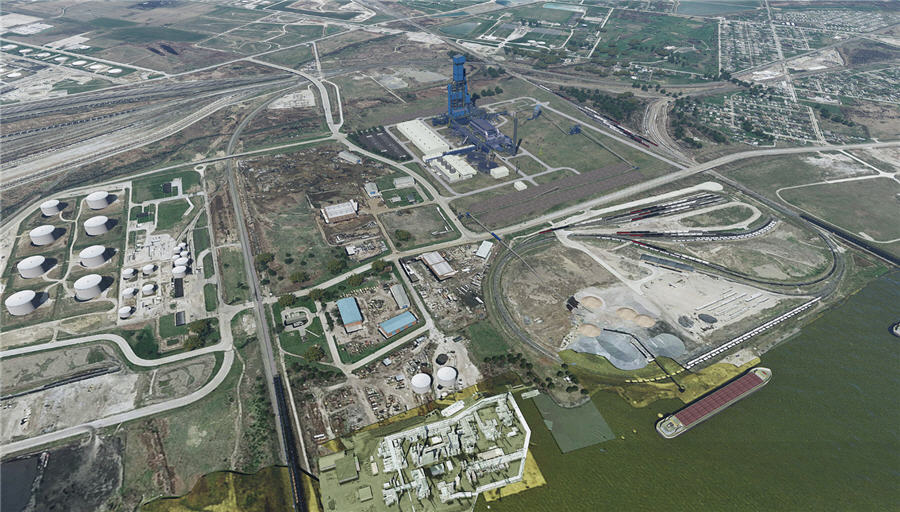
Cleveland-headquartered Cleveland-Cliffs (NYSE: CLF) is the largest flat-rolled steel producer and the largest iron ore pellet producer in North America.
The company’s products include advanced high-strength steel, stainless steel, and tinplate components, with the automotive industry accounting for 33% of all end-use demand; distributors and converters (32%); and infrastructure and manufacturing (24%).
In December, the company closed a $183 million acquisition of substantially all the operations of ArcelorMittal USA LLC and its subsidiaries, including ArcelorMittal’s 60% interest in I/N Tek L.P., a continuous cold-rolling plant that produces sheet steel in Indiana, and a 50% stake in I/N Kote L.P., which is adjacent to the I/N Teck site and produces hot-dipped galvanized and galvannealed steel and electrogalvanized sheet steel.
Cleveland-Cliffs recently marked six months of production from its Toledo direct reduction plant in Ohio. The plant produces hot-briquetted iron (HBI), an environmentally friendly alternative to scrap and imported pig iron. The plant, which is expected to churn out 1.9 million tonnes of HBI annually, would position Cliffs as the only producer of high-quality HBI steel for the electric arc furnace steel market within the Great Lakes region.
The company has four producing iron mines. These include Tilden in Michigan, and Northshore, Minorca and United Taconite in Minnesota. It also has an 85.3% share in the Minnesota-based Hibbing Taconite mine.
Based on Cleveland-Cliffs share of ownership, the mines have a combined production capacity of approximately 25.4 million tonnes of iron ore a year. The material is concentrated and then pelletized for delivery to steelmakers.
Alcoa
Market capitalization: $6.8 billion
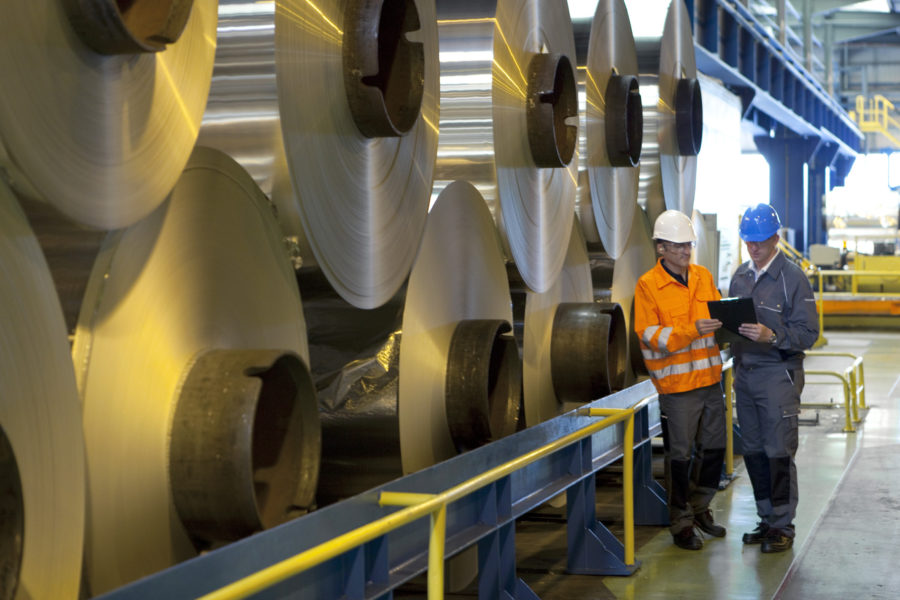
Alcoa (NYSE: AA) has one of the world’s largest portfolios of bauxite mines and is the largest alumina producer outside of China. Its aluminium business comprises smelting, casting, rolling, and energy assets.
Alcoa has assets in five continents. These include seven bauxite mines (four of which it operates) in Australia, Brazil, Guinea, and Saudi Arabia. It also has six alumina refineries in Australia, Brazil, and Spain. Its three-refinery operation in Western Australia, the world’s largest single source of alumina, supplies 8% of the global market. It also has a 25% share in a refinery that is part of its Ma’aden joint venture in Saudi Arabia, as well as aluminium assets in Africa, Australia, Canada, Europe, Saudi Arabia, and the U.S.
The company’s bauxite and alumina businesses include Alcoa World Alumina and Chemicals (AWAC), a joint venture between Alcoa (60%) and Alumina Ltd. AWAC mines bauxite and other aluminium-bearing material and refines, produces, and sells alumina-based chemicals.
In July, Alcoa announced that it would supply its low-carbon primary aluminium, EcoLum, to WKW Extrusion’s Erbsloh Aluminium for its new brand of semi-finished extrusion alloys. At about four tonnes of carbon dioxide equivalent for every tonne of aluminium produced, EcoLum has a carbon footprint approximately three and a half times lower than the global average, according to Alcoa.
Last year, Alcoa produced 48 million tonnes of bauxite, 13.5 million tonnes of alumina, and 2.3 million tonnes of aluminium.
MP Materials
Market capitalization: $6.4 billion
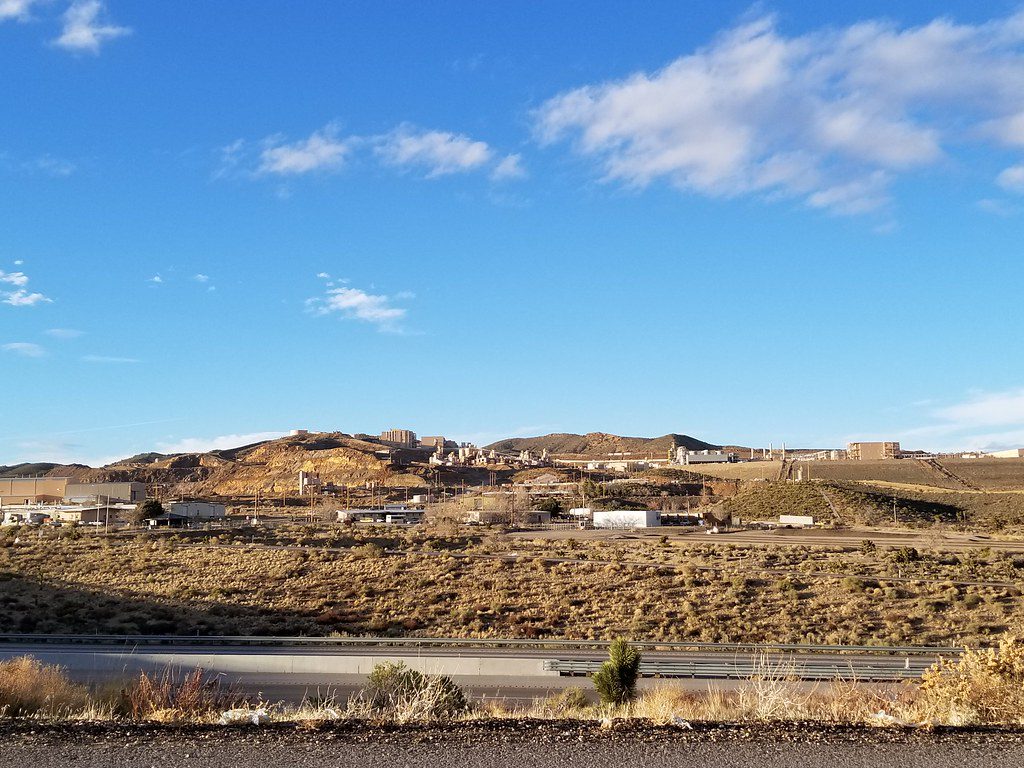
MP Materials (NYSE: MP) has joined the top ten list for the first time. The Las Vegas-headquartered company owns and operates Mountain Pass, the only integrated rare earth mining and processing facility in North America, about 24 km west of Primm in California’s Mojave Desert. The Mountain Pass site hosts the Mountain Pass open-pit mine and a rare earth elements refining and separation facility.
MP Materials acquired the mine out of bankruptcy in 2017.
According to the company, Mountain Pass now supplies about 15% of the world’s rare earth oxides, which are used in the magnets in electric vehicles and wind turbines.
MP Materials is working on a $170 million Stage II optimization of its rare earth refining and separation plant. Once completed in 2022, the company expects the plant will produce 6,075 tonnes of neodymium-praseodymium a year, a critical rare earth metal alloy.
Last year, the company produced 38,503 tonnes of rare earth oxides, an increase of 39% from the previous year’s 27,620 tonnes, at a cost of $1,430 per tonne of rare earth oxides.
Black Hills
Market capitalization: $4.1 billion
South Dakota-based Black Hills (NYSE: BKH) joins the top ten list for the first time. The company operates one of the country’s largest natural gas and electric distribution systems, with 74,030 km of natural gas pipelines and 14,484 km of electric transmission and distribution lines.
Founded in 1883, Black Hills now serves 1.3 million electric and natural gas customers across Arkansas, Colorado, Iowa, Kansas, Montana, Nebraska, South Dakota, and Wyoming. The company has a portfolio of 16 energy generation facilities, some of which it wholly owns and others with shared ownership. These include five natural gas operations, five coal mines, four diesel fuel plants, one natural gas/diesel plant, and two wind generators.
The coal produced at its Wyodak coal mine in Wyoming is shipped directly to the adjacent 90-megawatt (MW) Neil Simpson complex. Wyodak produces between 9,979 and 10,886 tonnes of coal per day.
With approximately 180 million tonnes of coal reserves in its coal mines in Wyoming, the company says it can supply coal to these generating facilities through 2055 at current production levels.
Black Hills has a 50% stake in the 29 MW Busch Ranch wind project in Colorado. Busch Ranch provides renewable electricity to 94,000 electricity customers in the state.
Last year, it completed construction of its $79 million Corriedale wind energy project in Wyoming. The 52.5 MW generator has 21 2.5 MW capacity wind turbines, and serves renewable energy subscribers across South Dakota and Wyoming.
Hecla Mining
Market capitalization: $3.9 billion
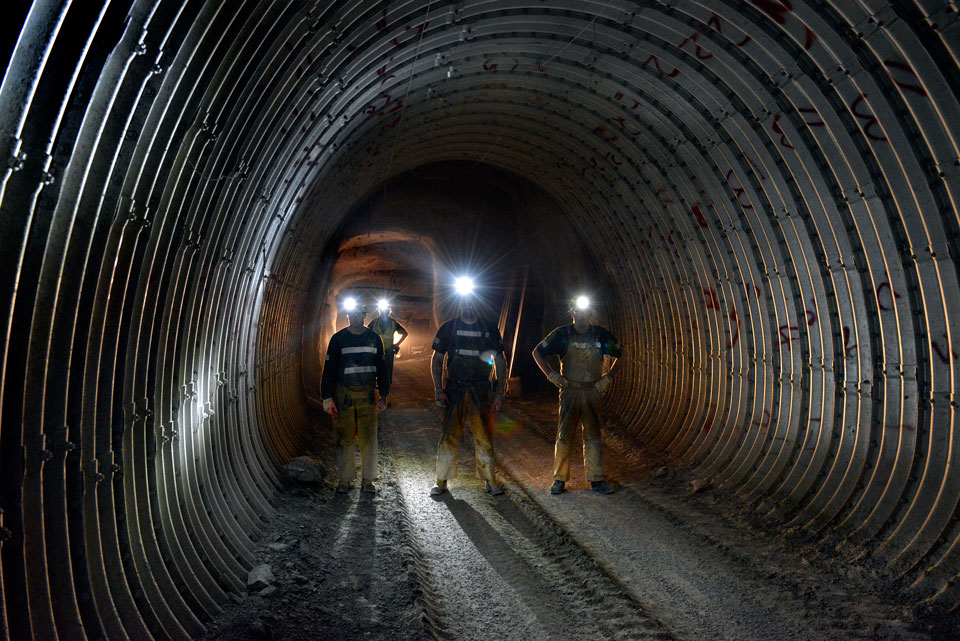
Hecla Mining (NYSE: HL) is a silver and gold producer with operations in Canada, Mexico and the U.S. Founded in 1891, the company is the largest silver producer in the U.S.
In addition to operating silver and gold mines in Alaska (Greens Creek), Idaho (Lucky Friday), and Quebec (Casa Berardi), Hecla owns two projects in Montana — Montanore and Rock Creek, and 12 exploration projects in Colorado, Idaho, Nevada, B.C., Quebec, and Mexico.
Hecla’s 100%-owned Greens Creek underground mine is, according to the company, one of the largest and lowest-cost primary silver mines in the world. Last year, the mine churned out 10.5 million oz. silver and 48,500 oz. gold at cash costs of $5.49 per oz. silver, after by-product credits.
In western Quebec, Hecla’s wholly-owned Casa Berardi underground gold mine produced 121,500 oz. gold last year at cash costs (after by-product credits) of $1,131 per oz. of gold. Casa Berardi was acquired in 2013 through Hecla’s acquisition of Aurizon Mines.
In Idaho, Hecla holds the Lucky Friday underground operation, within the state’s Coeur d’Alene mining district. In 2020, the mine produced two million oz. of silver at cash costs of $9.34 per oz. silver. The mine has been producing silver since 1942 and Hecla says it has 20 to 30 years of mine life ahead.
In 2020, Hecla produced 13.5 million oz. of silver and 208,962 oz. of gold. This year, it expects to produce between 12.9 and 14.
(This article first appeared in The Northern Miner)




